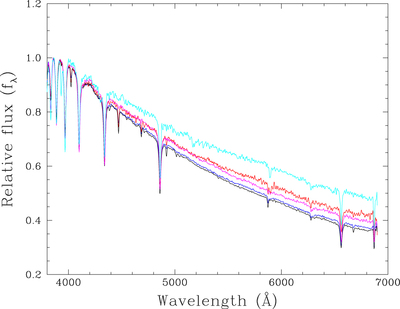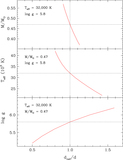Image Details

Caption: Figure 1.
Comparison of the flux-calibrated, low-resolution spectra of PG 0048+091 (cyan), PG 0014+067 (red), PG 1336−018 (magenta), PG 1047+003 (blue), and PG 1219+534 (black). These data have been obtained with the Boller and Chivens Spectrograph attached to the Bok Telescope of the Steward Observatory. The claimed accuracy of the flux calibration is a few percent. These five pulsators all have similar estimates of Teff and log g (see Table 2). PG 1047+003 and PG 1219+534 show no trace of binarity and can be considered as isolated stars. PG 0048+091 is known to be an unresolved binary containing an sdB and a G1 dwarf companion. Likewise, PG 1336−018 is also an unresolved binary, but contains a much fainter M5 dwarf companion displaying a strong reflection effect. Very likely, PG 0014+067 is also an unresolved binary system that contains a somewhat earlier dwarf than M5.
Copyright and Terms & Conditions
© 2019. The American Astronomical Society. All rights reserved.






